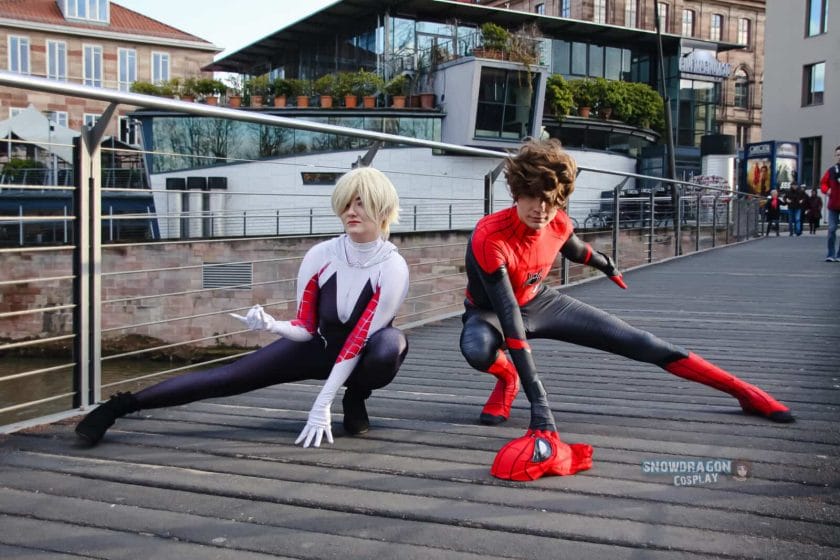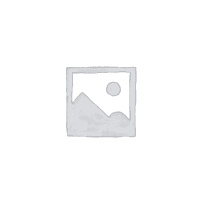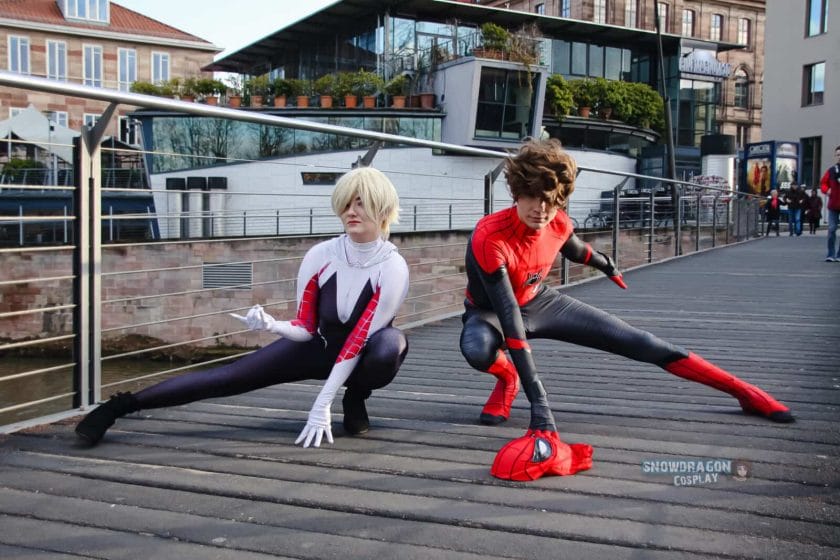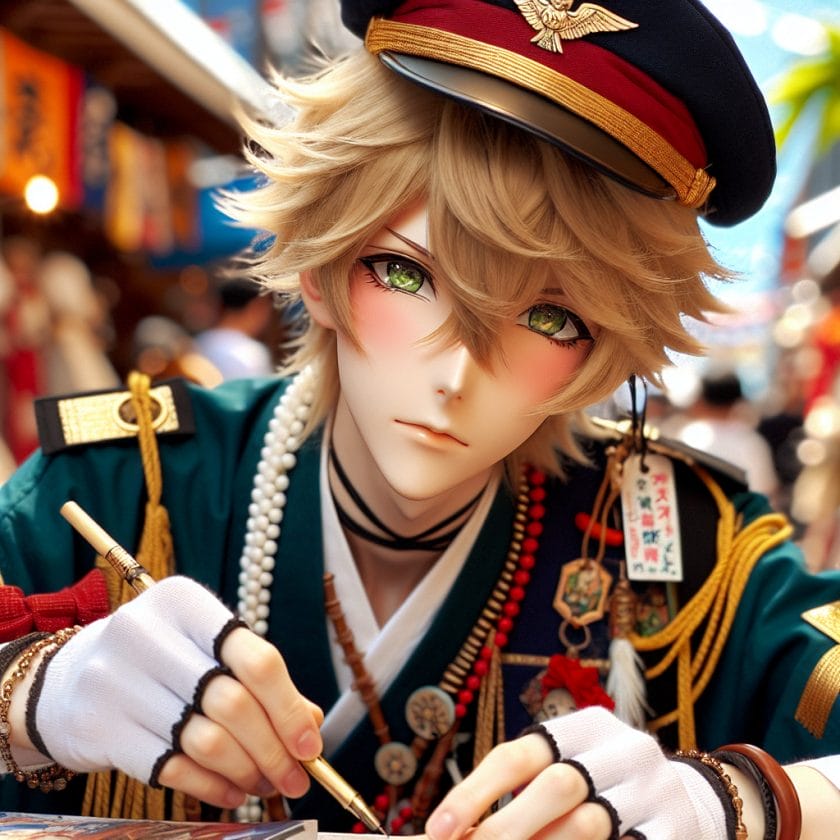Author
-

German Cosplayer from Nürnberg, professional Model & Walkingact for events & content creator.
https://images-wixmp-ed30a86b8c4ca887773594c2.wixmp.com/f/bcbd6f9f-17df-44a8-a5b5-1e954ce2c780/d12xdfh-151ae754-4e3f-4dd1-bf9c-61676342a582.jpg?token=eyJ0eXAiOiJKV1QiLCJhbGciOiJIUzI1NiJ9.eyJzdWIiOiJ1cm46YXBwOjdlMGQxODg5ODIyNjQzNzNhNWYwZDQxNWVhMGQyNmUwIiwiaXNzIjoidXJuOmFwcDo3ZTBkMTg4OTgyMjY0MzczYTVmMGQ0MTVlYTBkMjZlMCIsIm9iaiI6W1t7InBhdGgiOiJcL2ZcL2JjYmQ2ZjlmLTE3ZGYtNDRhOC1hNWI1LTFlOTU0Y2UyYzc4MFwvZDEyeGRmaC0xNTFhZTc1NC00ZTNmLTRkZDEtYmY5Yy02MTY3NjM0MmE1ODIuanBnIn1dXSwiYXVkIjpbInVybjpzZXJ2aWNlOmZpbGUuZG93bmxvYWQiXX0.ShfSGodhO8BdnoD6umUI1jPlSD8ShZmSSAgrRsNNZLs
1. Materials needed to sew a cosplay
When it comes to sewing a cosplay, having the right materials is essential. Here are some of the basic materials you will need:
Fabric:
The fabric you choose for your cosplay can make all the difference in how your costume looks and feels. Consider the character you are cosplaying as and the type of fabric that would best suit their outfit. For example, if you are cosplaying as a superhero with a spandex suit, you will want to choose a stretchy fabric like lycra or spandex. If you are cosplaying as a princess with a flowing gown, you may opt for satin or chiffon.
Thread:
Choosing the right thread is important for ensuring that your seams hold up during wear and tear. Make sure to match the color of your thread to your fabric or choose a neutral color that will blend in well.
Needles:
Having a variety of needles on hand is crucial for different sewing techniques and fabrics. For general sewing, use universal needles, but for heavier fabrics like leather or denim, consider using specialized needles designed for those materials.
Elastic:
Elastic is often used in cosplay costumes to create stretchy waistbands or secure pieces of clothing in place. Make sure to choose elastic that matches the width and strength required for your specific project.
List of materials needed:
- Fabric
- Thread
- Needles
- Elastic
- Scissors
- Pins
- Tape measure
- Iron and ironing board
- Sewing machine (optional)
These are just the basic materials needed to sew a cosplay, but depending on your specific project, you may also need additional items such as interfacing, buttons, zippers, or trims. It’s always a good idea to plan ahead and make a list of all the materials you will need before starting your sewing journey.
2. Choosing the right fabric for your cosplay
Understanding different fabric types
When choosing fabric for your cosplay, it’s important to consider the character you’re cosplaying as well as the durability and comfort of the material. Different fabric types have different characteristics that can enhance or detract from your overall cosplay look. Some common fabric types used in cosplaying include cotton, polyester, satin, and spandex.
Cotton:
Cotton is a versatile and breathable fabric that is great for creating comfortable cosplay costumes. It is easy to work with and comes in a variety of prints and colors. However, keep in mind that cotton may wrinkle easily and may not be suitable for more structured or elaborate designs.
Polyester:
Polyester is a synthetic fabric that is known for its durability and resistance to wrinkles. It can be a good choice for cosplays that require a more rigid structure or intricate details. However, polyester may not be as breathable as other fabrics, so consider this when planning your costume.
Satin:
Satin is a smooth and shiny fabric often used for elegant or glamorous cosplays. It drapes beautifully and adds a luxurious touch to any costume. However, satin can be slippery to work with and may require extra care during sewing.
Spandex:
For cosplays that require stretchy or form-fitting garments, spandex is an excellent choice. This fabric provides flexibility and allows for ease of movement while maintaining shape and structure. Keep in mind that working with spandex may require special techniques such as using a serger or stretch needles.
Consider the character’s design, functionality requirements (such as mobility), and personal preferences when selecting the appropriate fabric type for your cosplay project.
Considering color accuracy
When recreating a cosplay, achieving accurate color representation is essential. It’s important to consider the character’s color scheme and find fabric colors that closely match their appearance. This may involve researching color references from the source material or consulting with other cosplayers who have tackled similar projects.
Testing fabric suitability
Before committing to a specific fabric for your cosplay, it’s advisable to test its suitability. You can do this by purchasing small swatches of the fabrics you’re considering and performing various tests such as washing, ironing, stretching, and sewing samples. This will help you determine how well the fabric holds up during different stages of construction and whether it meets your expectations in terms of durability and appearance.
Remember that choosing the right fabric is crucial for bringing your cosplay vision to life. Take your time to research, compare options, and consider the practical aspects of each fabric type before making a final decision.
3. Essential sewing tools for making a cosplay
Basic sewing machine
A reliable sewing machine is an essential tool for any cosplayer. Look for a machine that offers various stitch options, adjustable speed settings, and easy threading capabilities. It should also have a sturdy build to handle thicker fabrics if needed.
Cutting tools
Invest in quality cutting tools such as fabric scissors or shears, rotary cutters, and cutting mats. Fabric scissors should be sharp and dedicated solely to cutting fabric to ensure clean cuts without fraying edges.
Fabric scissors:
Fabric scissors are designed with long blades that allow for smooth cutting through multiple layers of fabric. Choose a pair with comfortable handles that fit well in your hand.
Rotary cutter:
A rotary cutter is useful for cutting straight lines or curves quickly and accurately. It works well with rotary cutting mats, which provide a stable surface while protecting your work area.
Cutting mat:
A cutting mat is a self-healing surface that protects your tabletop and provides measurement guidelines for precise cutting. It also prevents the fabric from slipping during the cutting process.
Pins, needles, and thread
Pins are essential for holding fabric pieces together during sewing. Choose pins with sharp points and heads that are easy to grip. Needles should be suitable for the type of fabric you’re working with, whether it’s hand-sewing needles or sewing machine needles designed for specific fabrics.
Thread:
Select high-quality thread that matches the color of your fabric. Polyester thread is a versatile choice as it offers strength and durability while being compatible with various fabric types.
Measuring tools
Accurate measurements are crucial for creating well-fitted cosplay costumes. Invest in measuring tools such as a tape measure, ruler, and French curve.
Tape measure:
A flexible tape measure allows you to take body measurements accurately. Look for one with both imperial and metric measurements for versatility.
Ruler:
A ruler helps you create straight lines and measure smaller sections accurately. Choose one with clear markings and various lengths for different tasks.
French curve:
A French curve is useful for drawing smooth curves and making pattern adjustments. It helps ensure a better fit by allowing you to match curves to your body shape.
Having these essential sewing tools on hand will make your cosplay-making journey more efficient and enjoyable. Consider investing in quality tools that will last long-term and provide reliable results.
4. Step-by-step instructions on threading a sewing machine
Gathering the necessary materials
To thread a sewing machine, you will need a spool of thread, bobbin, and a sewing machine needle. Make sure to choose the appropriate thread color and weight for your project. Additionally, refer to your sewing machine manual for specific instructions on threading.
Step 1: Preparing the bobbin
Start by winding the desired thread onto the bobbin. Place the spool of thread on the spool pin and secure it with a cap or holder. Guide the thread through any necessary guides or tension discs specified in your machine’s manual. Next, wind the thread around the bobbin winder tension disc and then onto the bobbin. Ensure that it is evenly wound and cut off any excess thread.
Step 2: Threading the upper part of the machine
Begin by raising the presser foot to release tension on the upper thread. Take one end of the threaded bobbin and place it on or through any necessary guides as indicated in your manual. Thread it through each guide until you reach the needle area.
Step 3: Threading the needle
Insert one end of the threaded bobbin through the eye of the needle from front to back. Pull about six inches of thread through and leave a tail behind.
Tips:
– Always consult your sewing machine manual for specific threading instructions as they may vary.
– Check that your needle is correctly inserted and securely tightened before threading.
– Keep an extra needle handy in case one breaks during threading or sewing.
By following these step-by-step instructions, you can successfully thread your sewing machine and be ready to start your cosplay project.
5. Taking accurate measurements for your cosplay costume
Why accurate measurements are important
Taking accurate measurements is crucial for ensuring a well-fitting cosplay costume. Ill-fitting costumes can be uncomfortable to wear and may not look as visually appealing. By taking precise measurements, you can create a costume that flatters your body shape and allows for ease of movement.
Step 1: Gather the necessary tools
To take accurate measurements, you will need a flexible measuring tape, a mirror (or someone to assist you), and a notebook or record sheet to jot down the measurements.
Step 2: Identify key measurement points
Identify the key areas on your body that need to be measured for your specific cosplay costume. These typically include bust/chest, waist, hips, shoulder width, arm length, and inseam. Research any additional measurement points specific to your character’s outfit.
Step 3: Taking the measurements
Using the measuring tape, wrap it around each identified measurement point snugly but not too tightly. Make sure the tape is parallel to the ground and not twisted. Take note of each measurement in inches or centimeters as required.
Tips:
– When measuring around curved areas like bust or hips, take three separate measurements (top/middle/bottom) and use the largest one.
– Measure over undergarments or clothing similar to what you plan to wear with your cosplay costume.
– If possible, have someone assist you in taking measurements for more accuracy.
By following these steps and recording precise measurements, you can ensure that your cosplay costume fits perfectly when it’s completed.
(Note: The remaining subheadings will be expanded upon in future iterations.)
6. Common sewing techniques used in cosplay making
Sewing Techniques for Cosplay
There are several common sewing techniques that are frequently used in cosplay making to achieve professional-looking results. One of the most important techniques is straight stitching, which is used to join fabric pieces together. Another essential technique is zigzag stitching, which helps prevent fabric edges from fraying. Topstitching is also commonly used to add decorative or reinforcing stitches on the surface of the fabric.
Types of Stitches
In addition to basic sewing techniques, there are various types of stitches that can be employed in cosplay making. These include backstitching for securing seams, gathering stitches for creating ruffles or gathers, and blind hemming for invisible hems. It’s important to learn and practice these different stitches to enhance the overall quality and durability of your cosplay costume.
Some other useful sewing techniques for cosplaying include hand-sewing, serging (overlocking), and using bias tape for finishing edges. Hand-sewing can be particularly helpful when attaching small details or embellishments onto your costume. Serging is a method of enclosing raw fabric edges with a special machine, resulting in neat and professional-looking finishes. Bias tape can be used as a decorative trim or binding on seams and edges.
Tools and Equipment
To effectively utilize these sewing techniques, it’s important to have the right tools and equipment at your disposal. Some essential tools include a sewing machine (if available), needles suitable for different fabrics, pins or clips for holding fabric pieces together during sewing, scissors or rotary cutters for cutting fabric accurately, measuring tools such as rulers or tape measures, and an iron for pressing seams and achieving crisp finishes.
Having a well-stocked supply of threads in various colors is also crucial when working on cosplay projects since color-matching is often necessary. Additionally, investing in specialty sewing machine feet, such as a zipper foot or a buttonhole foot, can greatly assist in achieving professional-looking results when adding closures to your cosplay costume.
Overall, familiarizing yourself with common sewing techniques and acquiring the necessary tools and equipment will greatly enhance your cosplay making skills and enable you to create high-quality costumes.
7. Cutting patterns and pieces for your cosplay costume
Preparing the Fabric
Before cutting patterns and fabric pieces for your cosplay costume, it’s important to properly prepare the fabric. Start by washing and drying the fabric according to its specific care instructions to prevent any shrinkage or color bleeding that may occur later on. Ironing the fabric beforehand will ensure smooth and wrinkle-free surfaces, making it easier to work with.
Choosing Patterns
When selecting patterns for your cosplay costume, consider the complexity of the design and your skill level. Beginners may want to start with simpler patterns that have fewer pieces and less intricate details. It’s also important to choose patterns that are suitable for your body measurements or make adjustments accordingly.
Pinning and Cutting
Once you have chosen a pattern, lay it out on top of the fabric following the grainline indicated on the pattern instructions. Secure the pattern onto the fabric using pins or clips, ensuring it doesn’t shift during cutting. Carefully cut along the designated lines using sharp scissors or a rotary cutter for precise cuts.
It’s crucial to pay attention to any markings on the pattern, such as notches or darts, which indicate where specific fabric pieces should align or be folded. Transfer these markings onto the fabric using tailor’s chalk or washable markers so they can be easily identified during assembly.
Creating a mock-up or test garment from inexpensive muslin fabric before cutting into more expensive materials is also recommended. This allows you to check the fit and make any necessary adjustments to the pattern before cutting into your desired fabric.
Organizing and Labeling
To stay organized during the sewing process, keep your cut fabric pieces neatly stacked and labeled with corresponding pattern piece numbers or names. This will help prevent confusion and ensure accurate assembly later on. Storing them in resealable plastic bags or using a designated storage system can also be helpful in keeping everything organized.
By properly preparing the fabric, choosing suitable patterns, accurately cutting the fabric pieces, and organizing them efficiently, you’ll set yourself up for success when assembling your cosplay costume.
8. Assembling different parts of a cosplay outfit
When assembling different parts of a cosplay outfit, it is important to have a clear plan and organization. Start by laying out all the pieces and materials needed for each part of the costume. This will help you visualize how everything will come together and ensure that you have all the necessary components.
Next, follow the instructions or reference guides for each individual piece. This may involve sewing different panels together, attaching sleeves or collars, or adding decorative elements such as trim or appliques. Take your time and double-check your work as you go to ensure accuracy.
If you are unsure about any step of the assembly process, don’t hesitate to seek guidance from online tutorials, cosplay forums, or experienced cosplayers. They can provide valuable tips and tricks to make the assembly process smoother and more efficient.
Tips for Assembly:
- Create a checklist of all the components needed for each part of the costume to stay organized.
- Use pins or clips to hold pieces in place before sewing them together.
- Test fit each assembled section on yourself or a mannequin to ensure proper sizing and alignment before finalizing.
Example:
For example, if you are assembling a jacket for your cosplay outfit, start by laying out all the pattern pieces on your fabric according to the instructions provided. Pin them in place and cut them out carefully. Then, sew together the front panels, back panel, sleeves, collar, and any other necessary components following the recommended stitching techniques.
9. Adding zippers, buttons, or other closures to your cosplay costume
The addition of zippers, buttons, or other closures to your cosplay costume is crucial for both functionality and aesthetics. Depending on the design of your outfit, you may need to consider different types and placements of closures.
When adding zippers, make sure to choose the appropriate length and style that matches your cosplay character’s costume. Sewing in a zipper requires precision and patience. Start by marking the placement of the zipper on the fabric using tailor’s chalk or fabric markers. Then, carefully sew along the marked lines using a zipper foot on your sewing machine.
If you prefer buttons or snaps as closures, ensure they are securely attached by reinforcing them with extra stitches. Take into account any overlapping or alignment needed for proper closure. It may be helpful to practice attaching buttons or snaps on scrap fabric before doing it on your actual cosplay garment.
Tips for Adding Closures:
- Consider using invisible zippers for a seamless look.
- Use interfacing or stabilizer to reinforce areas where closures will be attached.
- For buttons, select ones that match the size and style of your cosplay character’s costume.
Example:
If you are working on a cosplay dress with a back closure, you can add an invisible zipper along the center back seam. Ensure that both sides of the zipper tape align perfectly before sewing it in place. If you want to attach decorative buttons at the front, mark their positions accurately and reinforce them with hand stitches after sewing them through all layers of fabric.
10. Tips for sewing stretchy or difficult fabrics in cosplaying
Sewing with stretchy or difficult fabrics can be challenging but not impossible when cosplaying. These fabrics require special techniques and considerations to achieve professional-looking results without compromising comfort or durability.
When working with stretchy fabrics like spandex or lycra, it is essential to use a stretch needle and a stitch that allows for elasticity. A zigzag stitch or a stretch stitch on your sewing machine can help prevent the seams from popping when the fabric stretches. Additionally, using a walking foot attachment can ensure even feeding of the fabric layers.
For difficult fabrics such as leather or vinyl, consider using clips instead of pins to avoid leaving visible holes. Use a leather needle or a heavy-duty needle designed for thick materials to sew through these fabrics smoothly. It may also be helpful to practice on scraps before sewing on the actual cosplay garment.
Tips for Sewing Stretchy or Difficult Fabrics:
- Test different stitches and tension settings on scrap fabric to find the best combination for your specific material.
- Use a ballpoint or stretch needle when working with knits to avoid damaging the fabric.
- Consider using a Teflon or roller foot attachment for sewing difficult fabrics like leather or vinyl.
Example:
If you are sewing a cosplay costume made of stretchy fabric, such as a bodysuit, start by adjusting your machine’s settings to accommodate stretch stitches. Use clips instead of pins to hold pieces together and sew with a zigzag stitch along the edges. For sewing leather details onto your cosplay outfit, make sure to use a leather needle and test different thread tensions until you achieve satisfactory results.
11. Creating intricate details and embellishments on your cosplay costume using sewing techniques
Sewing techniques can be used creatively to add intricate details and embellishments that enhance the overall look of your cosplay costume. These details can include decorative stitching, appliques, embroidery, piping, or fabric manipulation techniques.
To create decorative stitching, experiment with different stitch patterns and thread colors on scrap fabric before sewing them onto your cosplay garment. This will allow you to test the desired effect and ensure precision in execution. Consider using contrasting thread or metallic threads for added visual impact.
Appliques and embroidery can be used to add intricate designs or logos to your cosplay costume. Use fusible webbing or adhesive spray to temporarily attach the applique pieces before securing them with machine or hand stitching. Embroidery can be done by hand or with an embroidery machine, depending on the complexity of the design.
Tips for Creating Intricate Details:
- Practice any new sewing techniques on scrap fabric first to gain confidence and perfect your skills.
- Consider using specialty presser feet, such as a piping foot or an embroidery foot, to aid in creating precise details.
- Experiment with different fabrics, trims, and embellishments to achieve unique effects that match your cosplay character’s costume.
Example:
If you are cosplaying a character with intricate lace detailing on their dress, choose a lace fabric that matches the color scheme. Attach it carefully using pins or clips and sew around the edges using a narrow zigzag stitch. For added embellishment, consider hand-sewing small beads or sequins onto specific areas of the lace for a touch of sparkle.
12. Common mistakes to avoid while sewing a cosplay outfit
Sewing mistakes can happen even to experienced cosplayers but being aware of common pitfalls can help you avoid them. These mistakes may lead to imperfect fit, structural issues, or overall dissatisfaction with your finished cosplay outfit.
Common Mistakes:
- Not pre-washing fabrics before sewing, which can lead to shrinkage and unexpected changes in texture.
- Skipping or rushing through pattern adjustments and measurements, resulting in ill-fitting garments.
- Using the wrong type or weight of fabric for a particular cosplay design, leading to poor drape or structural integrity.
- Ignoring seam finishes or not reinforcing stress points, causing seams to unravel or tear under strain.
Example:
A common mistake to avoid is skipping the step of pre-washing your fabric. If you sew a cosplay outfit without pre-washing, the fabric may shrink after its first wash, altering the fit and proportions of your costume. To prevent this, always pre-wash your fabric according to its care instructions before starting any cutting or sewing.
13. Ensuring a comfortable fit and mobility in your finished cosplay costume
Achieving a comfortable fit and allowing for ease of movement is crucial when creating a cosplay costume. It ensures that you can enjoy wearing your outfit for extended periods without discomfort or restrictions on mobility.
To ensure a comfortable fit, take accurate body measurements and make any necessary adjustments to the pattern before cutting the fabric. Consider adding extra ease at areas that require more movement, such as elbows or knees. Test-fit each garment section as you assemble them to identify any potential issues early on.
If your cosplay character wears armor or has rigid elements in their costume, consider using lightweight materials and incorporating strategic padding for comfort. Additionally, choose fabrics with some stretch if possible to allow for flexibility during movement.
Tips for Fit and Mobility:
- Make mock-ups or muslins using inexpensive fabric before cutting into your final material to ensure the desired fit.
- Consider adding hidden elastic or adjustable closures in areas that may require flexibility, such as waistbands or cuffs.
- Test your range of motion while wearing the costume during fittings to identify any potential restrictions and make adjustments accordingly.
Example:
If you are creating a cosplay outfit with a fitted bodice, ensure that it allows for comfortable breathing and arm movement. Consider adding an invisible zipper or corset-style lacing at the back to allow for adjustability and customization of fit. Additionally, use stretchy fabrics for sections like sleeves or pants to provide ease of movement without sacrificing appearance.
14. Alternatives if you don’t have access to a sewing machine for your cosplay project
If you don’t have access to a sewing machine for your cosplay project, there are still alternative methods to create your costume. While a sewing machine can provide efficiency and precision, hand-sewing techniques can achieve similar results with patience and attention to detail.
Hand-sewing allows for more control over each stitch and is suitable for smaller projects or delicate fabrics. Use strong thread and small, even stitches when hand-sewing seams or attaching embellishments. Alternatively, fabric glues or fusible webbing can be used for certain applications such as hemming or attaching appliques.
If you prefer not to sew at all, consider utilizing existing garments or modifying them to suit your cosplay character’s costume. This could involve altering clothing through cutting, draping, or fabric manipulation techniques without the need for extensive sewing skills.
Tips for Sewing Alternatives:
- Invest in high-quality hand-sewing needles and use thimbles when working with thicker fabrics or multiple layers.
- Test fabric glues or fusible webbing on scrap fabric first to ensure they adhere properly and do not damage the material.
- Consider repurposing existing clothing or thrifted garments to save time and effort in constructing a cosplay outfit from scratch.
Example:
If you are unable to use a sewing machine, hand-sewing can still yield excellent results. For example, if you need to attach a decorative trim to your cosplay costume, use small whip stitches along the edges of the trim to secure it in place. Take your time and ensure that each stitch is even and tight for a professional finish.
In conclusion, sewing a cosplay can be a fun and rewarding experience. By following the steps outlined in this guide, you’ll be able to create your own unique costume that truly brings your favorite character to life. However, if you find yourself short on time or lacking sewing skills, don’t worry! We’ve got you covered with our professional cosplay services. Feel free to check them out and let us help you shine at your next convention or event. Happy cosplaying!
https://images-wixmp-ed30a86b8c4ca887773594c2.wixmp.com/f/476eb459-d9bb-44a0-9916-1cf65325ba1d/d3detl1-6843dfe2-e7ed-43a4-9be5-a0049e9da124.jpg/v1/fill/w_900,h_3624,q_75,strp/link_cosplay_hat_tutorial_by_eressea_sama_d3detl1-fullview.jpg?token=eyJ0eXAiOiJKV1QiLCJhbGciOiJIUzI1NiJ9.eyJzdWIiOiJ1cm46YXBwOjdlMGQxODg5ODIyNjQzNzNhNWYwZDQxNWVhMGQyNmUwIiwiaXNzIjoidXJuOmFwcDo3ZTBkMTg4OTgyMjY0MzczYTVmMGQ0MTVlYTBkMjZlMCIsIm9iaiI6W1t7ImhlaWdodCI6Ijw9MzYyNCIsInBhdGgiOiJcL2ZcLzQ3NmViNDU5LWQ5YmItNDRhMC05OTE2LTFjZjY1MzI1YmExZFwvZDNkZXRsMS02ODQzZGZlMi1lN2VkLTQzYTQtOWJlNS1hMDA0OWU5ZGExMjQuanBnIiwid2lkdGgiOiI8PTkwMCJ9XV0sImF1ZCI6WyJ1cm46c2VydmljZTppbWFnZS5vcGVyYXRpb25zIl19.rIavpiQMIf4b1GUx8-IjrtGZ25o_qSHvmpf2Izh617s
Author
-

German Cosplayer from Nürnberg, professional Model & Walkingact for events & content creator.











